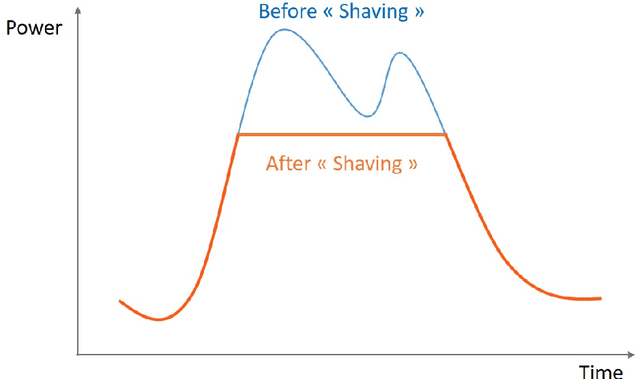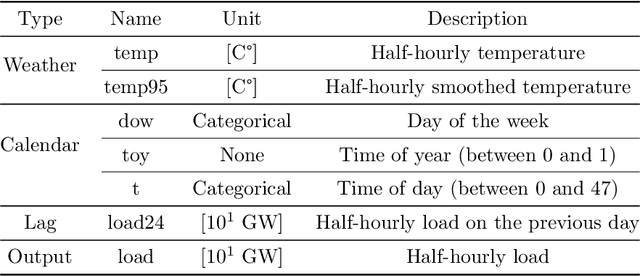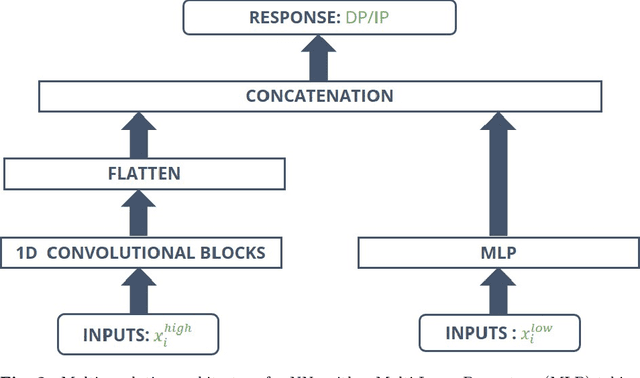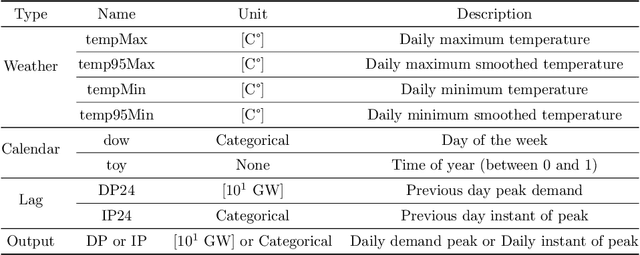Hui Yan
School of Biomedical Engineering and Instrumental Science, Zhejiang University, Hangzhou, P.R. China, School of Industrial Engineering, Eindhoven University of Technology, Eindhoven, The Netherlands
Semi-supervised Graph Anomaly Detection via Robust Homophily Learning
Jun 18, 2025Abstract:Semi-supervised graph anomaly detection (GAD) utilizes a small set of labeled normal nodes to identify abnormal nodes from a large set of unlabeled nodes in a graph. Current methods in this line posit that 1) normal nodes share a similar level of homophily and 2) the labeled normal nodes can well represent the homophily patterns in the normal class. However, this assumption often does not hold well since normal nodes in a graph can exhibit diverse homophily in real-world GAD datasets. In this paper, we propose RHO, namely Robust Homophily Learning, to adaptively learn such homophily patterns. RHO consists of two novel modules, adaptive frequency response filters (AdaFreq) and graph normality alignment (GNA). AdaFreq learns a set of adaptive spectral filters that capture different frequency components of the labeled normal nodes with varying homophily in the channel-wise and cross-channel views of node attributes. GNA is introduced to enforce consistency between the channel-wise and cross-channel homophily representations to robustify the normality learned by the filters in the two views. Experiments on eight real-world GAD datasets show that RHO can effectively learn varying, often under-represented, homophily in the small normal node set and substantially outperforms state-of-the-art competing methods. Code is available at https://github.com/mala-lab/RHO.
GrokFormer: Graph Fourier Kolmogorov-Arnold Transformers
Nov 26, 2024Abstract:Graph Transformers (GTs) have demonstrated remarkable performance in incorporating various graph structure information, e.g., long-range structural dependency, into graph representation learning. However, self-attention -- the core module of GTs -- preserves only low-frequency signals on graph features, retaining only homophilic patterns that capture similar features among the connected nodes. Consequently, it has insufficient capacity in modeling complex node label patterns, such as the opposite of homophilic patterns -- heterophilic patterns. Some improved GTs deal with the problem by learning polynomial filters or performing self-attention over the first-order graph spectrum. However, these GTs either ignore rich information contained in the whole spectrum or neglect higher-order spectrum information, resulting in limited flexibility and frequency response in their spectral filters. To tackle these challenges, we propose a novel GT network, namely Graph Fourier Kolmogorov-Arnold Transformers (GrokFormer), to go beyond the self-attention in GTs. GrokFormer leverages learnable activation functions in order-$K$ graph spectrum through Fourier series modeling to i) learn eigenvalue-targeted filter functions producing learnable base that can capture a broad range of frequency signals flexibly, and ii) extract first- and higher-order graph spectral information adaptively. In doing so, GrokFormer can effectively capture intricate patterns hidden across different orders and levels of frequency signals, learning expressive, order-and-frequency-adaptive graph representations. Comprehensive experiments conducted on 10 node classification datasets across various domains, scales, and levels of graph heterophily, as well as 5 graph classification datasets, demonstrate that GrokFormer outperforms state-of-the-art GTs and other advanced graph neural networks.
Two-Path GMM-ResNet and GMM-SENet for ASV Spoofing Detection
Jul 08, 2024Abstract:The automatic speaker verification system is sometimes vulnerable to various spoofing attacks. The 2-class Gaussian Mixture Model classifier for genuine and spoofed speech is usually used as the baseline for spoofing detection. However, the GMM classifier does not separately consider the scores of feature frames on each Gaussian component. In addition, the GMM accumulates the scores on all frames independently, and does not consider their correlations. We propose the two-path GMM-ResNet and GMM-SENet models for spoofing detection, whose input is the Gaussian probability features based on two GMMs trained on genuine and spoofed speech respectively. The models consider not only the score distribution on GMM components, but also the relationship between adjacent frames. A two-step training scheme is applied to improve the system robustness. Experiments on the ASVspoof 2019 show that the LFCC+GMM-ResNet system can relatively reduce min-tDCF and EER by 76.1% and 76.3% on logical access scenario compared with the GMM, and the LFCC+GMM-SENet system by 94.4% and 95.4% on physical access scenario. After score fusion, the systems give the second-best results on both scenarios.
GMM-ResNext: Combining Generative and Discriminative Models for Speaker Verification
Jul 03, 2024Abstract:With the development of deep learning, many different network architectures have been explored in speaker verification. However, most network architectures rely on a single deep learning architecture, and hybrid networks combining different architectures have been little studied in ASV tasks. In this paper, we propose the GMM-ResNext model for speaker verification. Conventional GMM does not consider the score distribution of each frame feature over all Gaussian components and ignores the relationship between neighboring speech frames. So, we extract the log Gaussian probability features based on the raw acoustic features and use ResNext-based network as the backbone to extract the speaker embedding. GMM-ResNext combines Generative and Discriminative Models to improve the generalization ability of deep learning models and allows one to more easily specify meaningful priors on model parameters. A two-path GMM-ResNext model based on two gender-related GMMs has also been proposed. The Experimental results show that the proposed GMM-ResNext achieves relative improvements of 48.1\% and 11.3\% in EER compared with ResNet34 and ECAPA-TDNN on VoxCeleb1-O test set.
GMM-ResNet2: Ensemble of Group ResNet Networks for Synthetic Speech Detection
Jul 02, 2024Abstract:Deep learning models are widely used for speaker recognition and spoofing speech detection. We propose the GMM-ResNet2 for synthesis speech detection. Compared with the previous GMM-ResNet model, GMM-ResNet2 has four improvements. Firstly, the different order GMMs have different capabilities to form smooth approximations to the feature distribution, and multiple GMMs are used to extract multi-scale Log Gaussian Probability features. Secondly, the grouping technique is used to improve the classification accuracy by exposing the group cardinality while reducing both the number of parameters and the training time. The final score is obtained by ensemble of all group classifier outputs using the averaging method. Thirdly, the residual block is improved by including one activation function and one batch normalization layer. Finally, an ensemble-aware loss function is proposed to integrate the independent loss functions of all ensemble members. On the ASVspoof 2019 LA task, the GMM-ResNet2 achieves a minimum t-DCF of 0.0227 and an EER of 0.79\%. On the ASVspoof 2021 LA task, the GMM-ResNet2 achieves a minimum t-DCF of 0.2362 and an EER of 2.19\%, and represents a relative reductions of 31.4\% and 76.3\% compared with the LFCC-LCNN baseline.
Topology-aware Debiased Self-supervised Graph Learning for Recommendation
Oct 24, 2023Abstract:In recommendation, graph-based Collaborative Filtering (CF) methods mitigate the data sparsity by introducing Graph Contrastive Learning (GCL). However, the random negative sampling strategy in these GCL-based CF models neglects the semantic structure of users (items), which not only introduces false negatives (negatives that are similar to anchor user (item)) but also ignores the potential positive samples. To tackle the above issues, we propose Topology-aware Debiased Self-supervised Graph Learning (TDSGL) for recommendation, which constructs contrastive pairs according to the semantic similarity between users (items). Specifically, since the original user-item interaction data commendably reflects the purchasing intent of users and certain characteristics of items, we calculate the semantic similarity between users (items) on interaction data. Then, given a user (item), we construct its negative pairs by selecting users (items) which embed different semantic structures to ensure the semantic difference between the given user (item) and its negatives. Moreover, for a user (item), we design a feature extraction module that converts other semantically similar users (items) into an auxiliary positive sample to acquire a more informative representation. Experimental results show that the proposed model outperforms the state-of-the-art models significantly on three public datasets. Our model implementation codes are available at https://github.com/malajikuai/TDSGL.
Daily peak electrical load forecasting with a multi-resolution approach
Dec 08, 2021



Abstract:In the context of smart grids and load balancing, daily peak load forecasting has become a critical activity for stakeholders of the energy industry. An understanding of peak magnitude and timing is paramount for the implementation of smart grid strategies such as peak shaving. The modelling approach proposed in this paper leverages high-resolution and low-resolution information to forecast daily peak demand size and timing. The resulting multi-resolution modelling framework can be adapted to different model classes. The key contributions of this paper are a) a general and formal introduction to the multi-resolution modelling approach, b) a discussion on modelling approaches at different resolutions implemented via Generalised Additive Models and Neural Networks and c) experimental results on real data from the UK electricity market. The results confirm that the predictive performance of the proposed modelling approach is competitive with that of low- and high-resolution alternatives.
Towards Multi-perspective conformance checking with fuzzy sets
Jan 29, 2020



Abstract:Conformance checking techniques are widely adopted to pinpoint possible discrepancies between process models and the execution of the process in reality. However, state of the art approaches adopt a crisp evaluation of deviations, with the result that small violations are considered at the same level of significant ones. This affects the quality of the provided diagnostics, especially when there exists some tolerance with respect to reasonably small violations, and hampers the flexibility of the process. In this work, we propose a novel approach which allows to represent actors' tolerance with respect to violations and to account for severity of deviations when assessing executions compliance. We argue that besides improving the quality of the provided diagnostics, allowing some tolerance in deviations assessment also enhances the flexibility of conformance checking techniques and, indirectly, paves the way for improving the resilience of the overall process management system.
 Add to Chrome
Add to Chrome Add to Firefox
Add to Firefox Add to Edge
Add to Edge